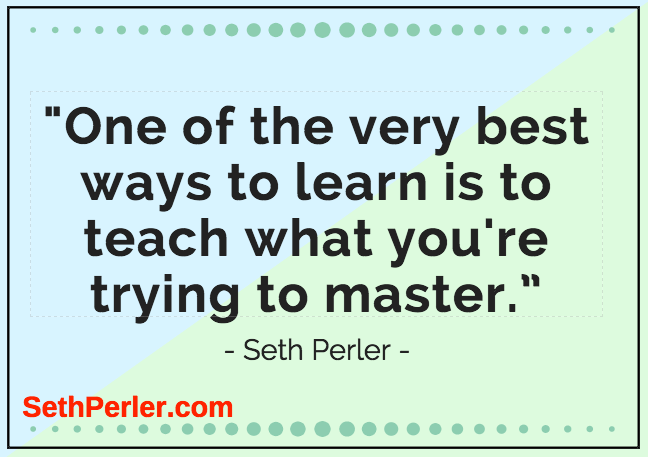The problem
Most of the struggling students I work with come to me with no realistic idea of how to “study”. They simply don’t spend enough time or energy on studying and the quality/type of studying is ineffective. For example, many of these kids think that studying means rereading notes a bunch of times, but this is usually unengaging, inefficient and unproductive.
One solution
Literally one of the very best ways to learn is to teach what you’re trying to master. Since it’s time for finals, this is the perfect time to use this strategy, and although it sounds simple, it’s probably my favorite and most powerful study tip of all.
Here’s how simple it can be
- Student organizes a “study party”. Invite a few friends over, preferably some very strong students because they help the group stay more focused and bring lots of great study strategies to the table.
- Tell everyone to bring food to share.
- Plan to have a very large block of time, like 12pm-5pm on a Sunday. (Of course, planning multiple days is better). Since it’s a large block of time, there is plenty of time for getting off task, eating, joking around. This is meant to be a relaxed session, NOT intense. You might be surprised at how well studying works when kids have fun working together like this.
- Definitely remove distractions, like noisy siblings, tv, games, etc..
- At the beginning of the meeting, make a plan for this study session by asking the group, “So what should we do to get the most out of this? What’s the plan here?”
- Start to study; test each other, discuss concepts, dive into the notes, look things up in the books, google it, etc.. That’s it! By doing these things you are teaching what you’re trying to master.
Why it works
- It’s fun and emotionally engaging. We learn better when emotions are engaged.
- It’s low stress. We learn better when our nervous systems are calm. This allows our PFCs, the part of our brain that is needed for complex thought, to function optimally.
- These students get to learn alternative study strategies just by seeing how others study.
- Students also get to see how others use strategies and tricks to stay focused.
- Teaching each other forces students to articulate concepts more carefully, engages discussions to clarify thoughts, and helps us communicate metaphorically as we try to explain things. This is all high level thinking!
- It allows for creative ideas for remembering and integrating course content.
Unfortunately
Getting students to implement this is another story. Many students have excuses for not trying. They say, “I don’t have anyone I know in that class”, “My friends wouldn’t want to do that”, etc.. Or they say, “Sure, that sounds good” but don’t have the executive function to carry it out. But when my students do try this, it’s a real game changer, and the further they go in their educational careers, the more powerful this strategy becomes. So if your child is resistant, just keep encouraging them to try it, try to help them chunk the planning down into manageable pieces, and try to give them ownership in the process so they have more buy-in.
Good luck!
Seth
Please share YOUR thoughts about the #1 study tip! Thanks, Seth
If you like this, please *CLICK* below to share on your FB! Thanks
